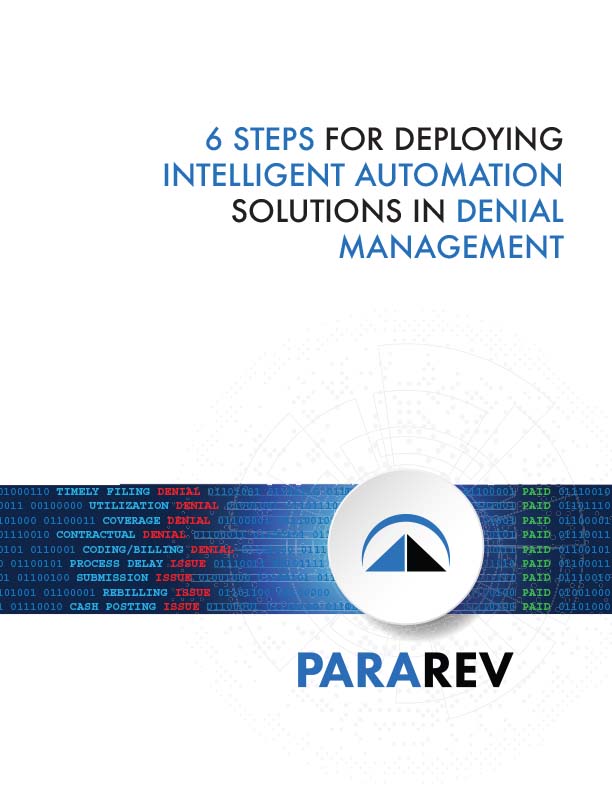Waste in the U.S. healthcare system has decreased slightly over the past eight years, but it still remains an enormous problem that consumes 25% of all healthcare dollars, a new study has found.[1]
Published in the Journal of the American Medical Association (JAMA) in October, the study estimated the full amount of healthcare waste at between $760 billion and $935 billion annually, or roughly one-quarter of all healthcare expenditures.[2] The JAMA report was produced from analysis of peer-reviewed publications, government reports and unpublished or non-commercial reports.
Six domains
While the annual percentage of waste has fallen from an estimated 30% in 2011, unnecessary spending continues to occur in a wide variety of areas. The JAMA study estimated the range of wasted expenditures across six domains:[3]
| Domain | Wasted Expenditures |
|---|---|
| Pricing failure | $230.7 – $240.5 billion |
| Fraud and abuse | $58.5 – $83.9 billion |
| Administrative complexity | $265.6 billion |
| Failure of care delivery | $102.4 – $165.7 billion |
| Failure of care coordination | $27.2 – $78.2 billion |
| Overtreatment or low-value care | $75.7 – $101.2 billion |
Zeroing in on non-clinical waste
Within each domain, waste can manifest in a variety of ways, according to the JAMA article. Among the three non-clinical areas identified in the study:
- Pricing failure can result when prices substantially deviate from ranges expected in a well-function marketplace wherein prices reflect the costs of production plus a fair profit. As an example, the study noted U.S. prices for diagnostic procedures such as MRI and CT scans are several times more than identical procedures in other countries due to a lack of transparency and the absence of competitive markets. The study incorporated research that focused on four areas of pricing: medication pricing, payer-based health services pricing, laboratory-based pricing and ambulatory pricing. The estimated total savings from interventions that address pricing failure range from $81.4 billion to $91.2 billion.[4]
- Fraud and abuse determinations were focused primarily on Medicare services. Despite the scope of the problem, the Medicare Fee-for-Service Recovery Audit Program has made significant progress in reducing fraud, waste and abuse since the initiative was launched in 2009. According to the Centers for Medicare and Medicaid Services (CMS), more than $10 billion has been recouped for Medicare over the life of the program.[5] The study estimated that $22.8 billion – $30.8 billion could be saved in this category.[6]
- Administrative complexity waste stems in part from the fragmented nature of healthcare and result from inefficient or misguided rules established by government agencies, accreditation organizations, payers and others. These requirements can include payer rules that consume limited physician time in needlessly complex billing procedures. In addition, responding to lengthy Medicare Recovery Audit Contractor (RAC) audits can require significant provider resources.
Third-party partnerships
Healthcare organizations can enlist external expertise to help reduce waste associated with pricing, fraud and abuse monitoring, and administrative complexity. ParaRev understands the convergence of forces at work in today’s market and the tools providers need to respond effectively. That’s why we’ve assembled a sophisticated array of services and technologies that collectively deliver the capabilities your organization needs to cut waste and flourish in the current marketplace.
- Rational pricing
For hospitals and health systems, a solid financial footing requires the development of a comprehensive, market-based pricing strategy built around cost, reimbursement and peer pricing data. To help you create a new pricing model, ParaRev will review your current transaction data across all revenue streams to develop a complete market position summary.
Next, we’ll assess rates charged for equivalent services by each member of your designated provider peer group. From these comparisons, you’ll be able to see exactly how your pricing lines up with specific competitors to quickly identify opportunities for increasing prices while remaining within group norms. You’ll also be able to flag any instances in which your organization is the high-priced outlier.
The net result of this effort is improved profitability through the creation of a detailed and empirically based pricing model. The model ensures you’re aligned with peer group averages while positioning you to capitalize on opportunities for optimized returns on below-market-priced items and services.
- Strengthening revenue integrity to reduce waste
Although rational pricing is essential for competitive positioning and waste reduction, a similarly refined approach to revenue cycle management is necessary to ensure an organization’s financial foundation is sound.
HFRI’s revenue integrity program is a comprehensive service that complements our pricing suite by helping ensure critical elements of the revenue cycle – coding, charge capture and claims management – are executed correctly and consistently. The objective is to reduce the administrative complexity of coding and billing, along with attendant waste, while ensuring optimal collections.
The process involves a detailed chargemaster review, onsite audits, retrospective claims analysis and automated claim audit tools to identify compliance and charge capture problems. We can also help you effectively manage RAC audits and other regulatory actions to help ensure you aren’t compelled to commit inordinate amounts of resources to the task.
- Decreasing administrative complexity through AR recovery and resolution
Although 90%[7] of denials are preventable, 65%[8] of are never corrected or resubmitted for payment. This is largely due to the labor-intensive complexity associated with working denials. ParaRev can help you reduce this burden and collect more revenue with scalable, client-specific accounts receivable (AR) resolution and recovery solutions. These services allow hospitals to systematically address problem claims across the full AR spectrum to cut compliance risk and optimize collections. Through our proprietary, intelligent automation and powerful process engineering, we’re also able to resolve all claims, regardless of size or age. Denial management is handled through the identification and categorization of toot causes, with causes ranging from contractual, registration and clinical issues to coding, coverage and utilization denial triggers. Working from category-specific, prioritized work queues, our remediation specialists expedite rework and secure resolution for both low- and high-value claims much more quickly. Our process also helps identify reoccurring problem areas to prevent denials from occurring in the first place.
A comprehensive solution
Cutting systematic waste in the areas of pricing and administrative complexity while reducing the risk of costly fraud, waste and abuse audits requires an approach grounded in empirical evidence and supported by a capable staff and advanced technologies.
ParaRev’s suite of services can help you significantly refine your pricing, coding, AR recovery and resolution, and denial management processes. The result is improved revenue capture, less waste, reduced compliance risk and better margins. Contact us today to learn more about how we can help your organization cut waste across a range of areas.
- “Waste in the US Health Care System Estimated Costs and Potential for Savings,” William H., MD Shrank, MD, MSHS; Teresa L. Rogstad, MPH; Natasha Parekh, MD, MS. JAMA. Oct. 2019.
- Ibid
- Ibid
- Ibid
- “Recovery Audits: Improvements to Protect Taxpayer Dollars and put Patients over Paperwork,” Seema Verma, Administrator, Centers for Medicare & Medicaid Services. May 2, 2019.
- Ibid
- Morgan Haines, “An ounce of prevention pays off: 90% of denials are preventable,” Advisory Board. Dec. 11, 2014.
- “Optimizing the Revenue Cycle Requires a Financially Integrated Network,” HFMA. July 7, 2015.

Overcome the challenges of hospital pricing and revenue cycle management for improved revenue capture and better margins. Download our whitepaper to discover 3 ways to accelerate your financial transformation!
Related Posts
None found













